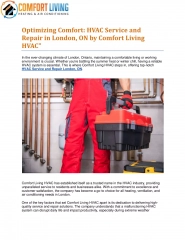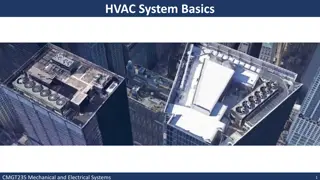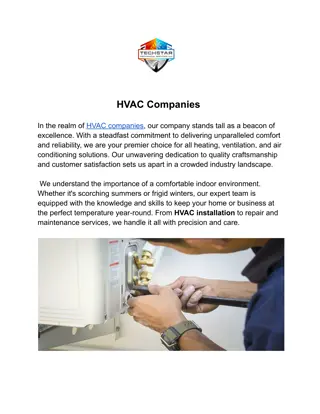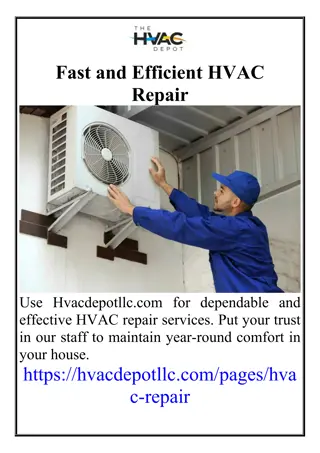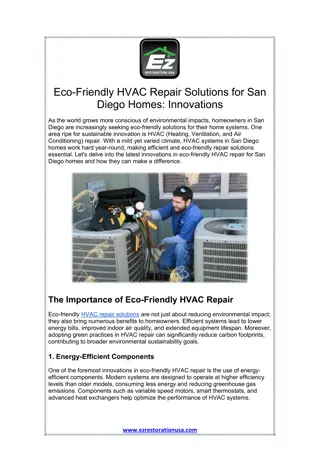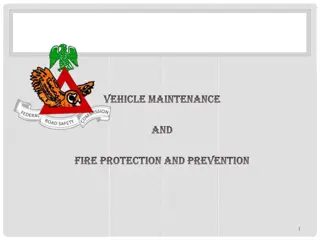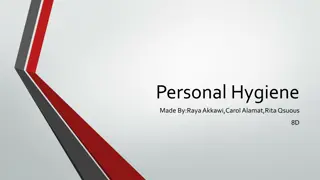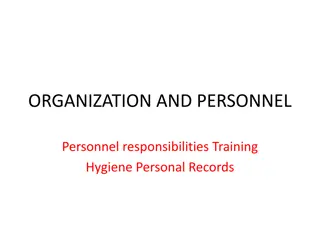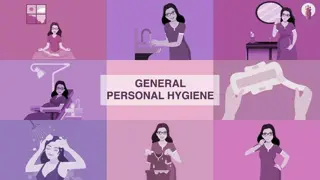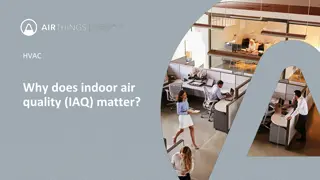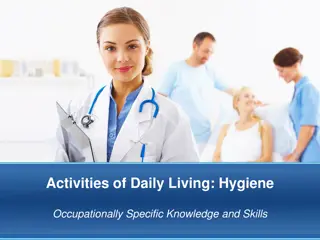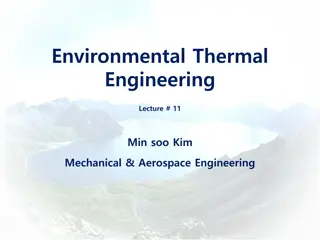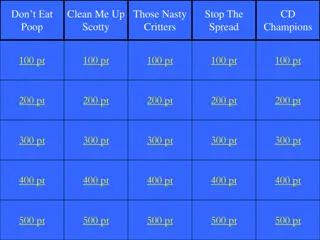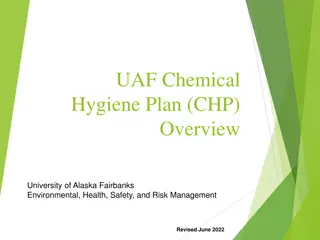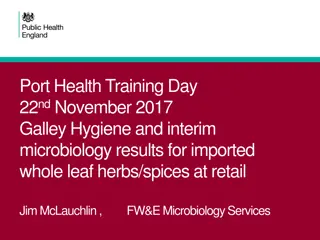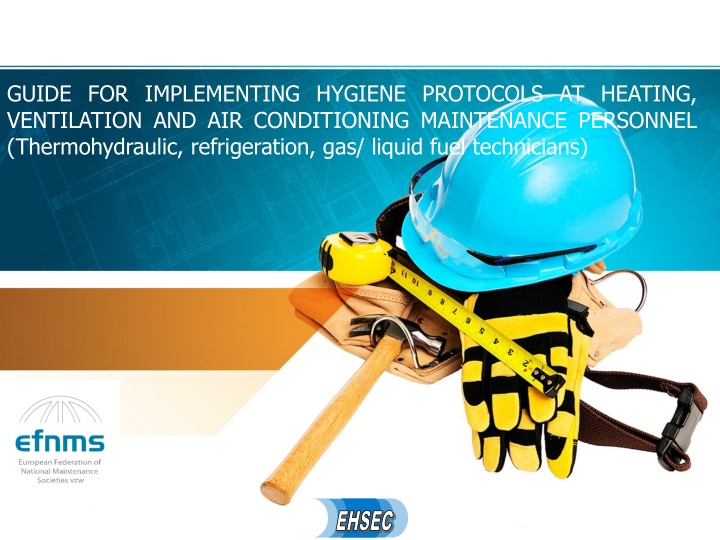
Implementing Hygiene Protocols for HVAC Maintenance Personnel
This guide provides recommended hygiene protocols for heating, ventilation, and air conditioning (HVAC) maintenance technicians to minimize the risk of SARS-CoV-2 exposure. It covers personal protection equipment (PPE) requirements and professional activities where technicians may encounter the virus. The guide also suggests additional PPE for pandemic situations, emphasizing safety measures during work in various settings.
Download Presentation

Please find below an Image/Link to download the presentation.
The content on the website is provided AS IS for your information and personal use only. It may not be sold, licensed, or shared on other websites without obtaining consent from the author. If you encounter any issues during the download, it is possible that the publisher has removed the file from their server.
You are allowed to download the files provided on this website for personal or commercial use, subject to the condition that they are used lawfully. All files are the property of their respective owners.
The content on the website is provided AS IS for your information and personal use only. It may not be sold, licensed, or shared on other websites without obtaining consent from the author.
E N D
Presentation Transcript
GUIDE FOR IMPLEMENTING HYGIENE PROTOCOLS AT HEATING, VENTILATION AND AIR CONDITIONING MAINTENANCE PERSONNEL (Thermohydraulic, refrigeration, gas/ liquid fuel technicians) EHSEC
OBJECTIVE OF THE IMPLEMENTATION GUIDE This guide intends to serve as a tool for the effective implementation of sanitary protocols for HVAC maintenance technicians. The guide embodies recommended measures to be taken in order to reduce as much as possible the risk of SARS-CoV-2 exposure resulting in transmitting the Covid 19 viral infection, during their working hours. The contents of this guideline is subject to change according to the scientific developments because of the limited knowledge on the SARS- CoV-2 virus biological behavior, EHSEC 2
FIELD OF APPLICATION The final recipients of this study are professional technicians that carry out both installation as well as maintenance works: 1. Plumbers 2. Refrigeration technicians 3. Gas and liquid fuel technicians 4. HVAC technicians 5. Technicians of commercial enterprises support departments etc. EHSEC 3
PROFESSIONAL ACTIVITIES IN WHICH THE TECHNICIANS MAY BE EXPOSED TO SARS-COV-2 Supply and receipt of raw and packaging materials Transportation and storage to the work area Work on site or client Technical work in groups without keeping safe distancing Works in hydraulic water supply and sewage networks Waste management EHSEC 4
PERSONAL PROTECTION EQUIPMENT (PPE) The above operations require the following PPE irrespective to the SARS-CoV-2 risk: High mechanical strength work gloves Safety glasses Work uniform Safety shoes Respiratory mask when there are fumes or biological pollutants EHSEC 5
PERSONAL PROTECTION EQUIPMENT (PPE) Owing to the pandemic, these PPEs may be supplemented as follows: Disposable nitrile or vinyl gloves for all works Face shield for work in environments with high biological load (drainage, biological treatment) Disposable work uniform Waterproof safety shoes without holes Disposable shoe covers FFP2 protection mask or corresponding canister filters EHSEC 6
RECEIPT OF MATERIALS WAREHOUSE Avoid shaking hands and restrict the physical contact with vendor drivers. Make sure suppliers follow all safety precautions to prevent the spread of SARS-CoV-2 that you recommend them. Use mask and gloves when receive raw materials or goods. Disinfect handles of pallet trucks or forklifts. Alternatively, cover the vehicle controls with a film that changes with the operator if this is feasible. Manage stocks and orders so that deliveries are scheduled at the lowest frequency possible and at different delivery hours per supplier. EHSEC 7
RECEIPT OF MATERIALS - WAREHOUSE Sign documents using your personal pen. Designate and delimit a specific staging area for the goods & materials that either received or ready for release. If feasible, store the materials under direct sunlight in the surrounding area as it reduces the active SARS-CoV-2 population. Suppliers do not need to enter the premises except in the designated area. Unpack immediately the goods & materials received that have outer packaging and, if possible, discard them immediately using gloves and a mask. EHSEC 8
PURCHASING MATERIALS AT THE SUPPLIERs PREMISES Wear a mask. Keep safe distances by staying on the marked spots on the ground. If the distances are breached maintain safe distancing or speak up. Disinfect handles of pallet trucks or forklifts. Prefer contactless transactions. Receive the documents (eg invoices) without physically touching them in an envelope. The electronic exchange of documents is recommended, if possible and allowed by the current legislation. Sign documents your personal pen. Use a mask and gloves when picking up and transporting goods & materials and dispose of PPE immediately afterwards. EHSEC 9
WORKING IN A CUSTOMERs RESIDENCE Prior to your arrival at the customer : Politely inquire if any of the customer residents belongs to vulnerable groups. Also investigate whether people have come in contact with suspected or confirmed Covid-19 cases or visited high-risk countries or areas. Agree the steps that need to be taken by both you and the residents to make your job easier and avoid misunderstandings or surprises. Inquire as to whether the customer has a sufficient amount of disinfectants, soap and cleaning agents and disposal cans. If not you should be provided with your own. EHSEC 10
WORKING IN A CUSTOMERs RESIDENCE Upon your arrival at the customer: Wear your PPE (FFP2 mask, safety goggles and, if required, gloves, disposable overalls and footwear). If the disposable uniform is not available then the working outfit should be cleaned / disinfected after work Understand the working methodology and explain that the work may be delayed due to additional measures EHSEC 11
WORKING IN A CUSTOMERs RESIDENCE During your work: In case the work involves exposure to high biological load (eg repair of sewer leakage, change of potentially contaminated filters) it is necessary to use a complete set of PPE (FFP2 mask, disposable overalls, legs, safety glasses, gloves, shoe covers etc.). Ventilate your work area with special gear if other means are not available. Avoid any physical contact with the customer. Clean and disinfect your working area with chemicals or steam cleaners especially if there are leaks. Clean and disinfect with suitable chemicals or steam the required components to be replaced, such as filters Do not clean active electrical installations All contaminated PPE must be discarded during operation The generated waste must be disposed of in the special waste bags you have brought with you. EHSEC 12
WORKING IN A CUSTOMERs RESIDENCE After your work: Clean your work area thoroughly and disinfect it if necessary. Discard all disposable PPEs. Non-disposable, contaminated disinfected. Collect all waste in the garbage bags and seal them. Carry them outside avoiding indoor areas as much as possible and dispose of them in a garbage bin outside the house. PPE must be cleaned or EHSEC 13
WORK IN PROFESSIONAL PREMISES Prior to your arrival at the customer: Take the same provisions as in for residential customers. Inquire on the presence of people during your work in order to handle overcrowding and organizational issues. Make an agreement about the possibility of prohibiting the entrance at your workplace and on how to manage your waste. Upon arrival at the customer: Take the same provisions as in for residential customers. During your work: Take the same provisions as in for residential customers. Avoid overcrowding After your work: Everything that applies to residential customers EHSEC 14

